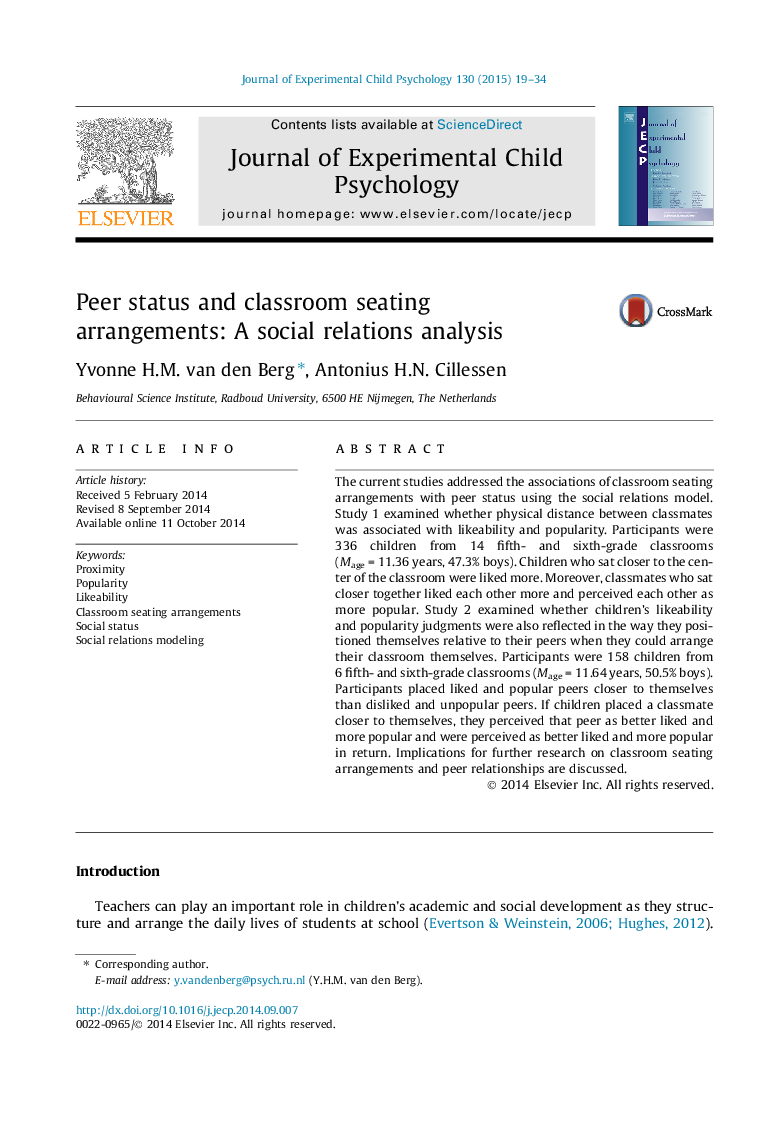| Article ID | Journal | Published Year | Pages | File Type |
|---|---|---|---|---|
| 917999 | Journal of Experimental Child Psychology | 2015 | 16 Pages |
•Teacher-determined seating arrangements are associated with judgments of status.•Adolescents express perceptions of peer status in classroom seating distance.•Effective classroom management should include the classroom physical structure of classrooms.
The current studies addressed the associations of classroom seating arrangements with peer status using the social relations model. Study 1 examined whether physical distance between classmates was associated with likeability and popularity. Participants were 336 children from 14 fifth- and sixth-grade classrooms (Mage = 11.36 years, 47.3% boys). Children who sat closer to the center of the classroom were liked more. Moreover, classmates who sat closer together liked each other more and perceived each other as more popular. Study 2 examined whether children’s likeability and popularity judgments were also reflected in the way they positioned themselves relative to their peers when they could arrange their classroom themselves. Participants were 158 children from 6 fifth- and sixth-grade classrooms (Mage = 11.64 years, 50.5% boys). Participants placed liked and popular peers closer to themselves than disliked and unpopular peers. If children placed a classmate closer to themselves, they perceived that peer as better liked and more popular and were perceived as better liked and more popular in return. Implications for further research on classroom seating arrangements and peer relationships are discussed.
